Bosnia and Herzegovina / Bosna i Hercegovina / Босна и Херцеговина / Bosna i Hercegovina – Let’s explore here
What’s it like in Bosnia and Herzegovina?
Bosnia and Herzegovina (BIH) is now one of the fastest growing tourist hotspots in Europe. Affordable, mainly unexplored and with friendly inhabitants make it a great place to visit.
It’s about a quarter of the size of the UK, and its population is around 3½ million people (2023), about ½ million of whom live in the capital, Sarajevo. It has land borders with Croatia, Montenegro and Serbia.
In the central and eastern regions, it’s mountainous, in the northwest it’s mainly hilly, and in the northeast it’s mostly flat. The highest point is Mount Maglić, in the south of the country, at 7,828 ft (2,386 m) above sea level.

What’s the difference between Bosnia and Herzegovina?
Bosnia and Herzegovina are two distinct regions that together form the country of Bosnia and Herzegovina, located in south east Europe. The difference between them lies primarily in geography and history.
- Bosnia is the larger and more northern region, characterized by its mountainous terrain and forests. The name ‘Bosnia’ historically referred to the area that includes the capital, Sarajevo. It has a more mixed ethnic composition, with a majority of Bosniaks (Bosnian Muslims), but also Croats and Serbs.
- Herzegovina is the southern, smaller region, known for its Mediterranean climate, with more sunny days and a more Mediterranean feel. Historically, it was a separate principality, and the name comes from the German title ‘Herzog’, meaning duke, referring to the noble family that once ruled here. The population is primarily Croat, and the area has many beautiful coastal towns.
Together, Bosnia and Herzegovina share a diverse cultural and ethnic history, with each region having its unique characteristics.

A bit about the history go Bosnia and Herzegovina
Bosnia and Herzegovina has a complex and diverse history, shaped by its location in the Balkans and its cultural, religious, and political influences.
Early History and Medieval Period
The region was inhabited by Illyrians before becoming part of the Roman Empire. In the medieval period, Bosnia became an independent kingdom in the 12th century, later becoming a part of the Ottoman Empire in the 15th century. Bosnia and Herzegovina were part of the Ottoman Empire for several centuries (1463-1878), during which the majority of the population converted to Islam, and the region saw significant Ottoman architectural and cultural influence.
Austro-Hungarian Rule
In 1878, following the Russo–Turkish War, Bosnia and Herzegovina were occupied by the Austro–Hungarian Empire and formally annexed in 1908. The region remained under Austro–Hungarian control until the end of World War I.
Yugoslavia and World War II
After World War I, Bosnia and Herzegovina became part of the Kingdom of Yugoslavia, a state composed of various ethnic and religious groups. During World War II, the region was occupied by Nazi Germany, and after the war, it became a republic within the Socialist Federal Republic of Yugoslavia under the leadership of Josip Broz Tito.
Bosnian War and Independence
In 1992, Bosnia and Herzegovina declared independence from Yugoslavia following a referendum, leading to the outbreak of the Bosnian War. The war (1992-1995) was marked by ethnic violence, particularly between Bosniaks (Muslims), Croats (Catholics), and Serbs (Orthodox Christians), leading to widespread atrocities, including genocide in Srebrenica. The war ended with the 1995 Dayton Agreement, which established Bosnia and Herzegovina as a federalized country with two autonomous entities: the Federation of Bosnia and Herzegovina (predominantly Bosniak and Croat) and Republika Srpska (predominantly Serb).
This war has shaped so many of the countries in the Balkans, and reminders can be seen in almost every town and city.
Post-War and Modern Era
Since the war, Bosnia and Herzegovina has struggled with political instability, economic challenges, and ethnic divisions. The country has made progress toward European integration, though it still faces issues related to governance, corruption, and the legacy of the war. Today, Bosnia and Herzegovina is a country with a complex political structure, aiming to balance the interests of its three main ethnic groups while working towards EU membership.

Bosnia and Herzegovina road trip
Our road trip through Bosnia and Herzegovina was part of a much larger European road trip.
Bosnia’s second city
On our road trip through Bosnia and Herzegovina, we travelled from Kostajnica in Croatia, through to Bosnia’s second city, Banja Luka. The route took us along some pretty poor roads through woodland, dotted with houses covered in bullet holes! Reminders of the war! Banja Luka is an excellent city with lots to do and see, and is extremely good value for money. We stayed at Apartman Divine, which is highly recommended, and all the people we met were super friendly and helpful.
The old towns
We then travelled down through ever increasing mountainous terrain to the lovely medieval town of Jayce and its waterfall. Jayce is highly recommended. Park up near the cafés at the bottom of the hill, and take a walk up to the fortress that dominates the town. Super views and a really interesting place. The food is great too!
The capital
We then drove on through Travnik, which seemed to be closed for the day? before entering the resplendent capital, Sarajevo. Our only prior knowledge of Sarajevo came from the news footage during the war in the 1990s. The capital is however a fantastic place to visit. There are two main centres, the new and the old, and both are great for enjoying an evening out.
National Park
After a number of days in Sarajevo, we headed west towards the Blidinje mountains of BIH. What an incredible place Blidinje is! Almost unlike anywhere else we’ve been, although the rainy, wintry weather had quite something to do with this feeling. The Doljani valley is spectacular, whereas Blidinje lake and the mountains to the west are almost like something out of a film. Well worth a visit!
The waterfalls
We were recommended the famous Kravice waterfalls in the south, which the BIH people are very proud of. It reminded is quite a lot of Plitvička lakes in Croatia, though not quite on the same scale. Again, really friendly people there, which was a theme in BIH.
We then headed over to Mostar to stay for a while. Mostar is amazing, with its famous old bridge, the multitude of restaurants and cafés, the friendly people. What a great place. there are many reminders of the war in Mostar, although much of the city has been repaired and is very picturesque.
Real Bosnia and Herzegovina
Finally we made our way north up to Montenegro via Mount Maglić and Foča. These eastern towns are rarely frequented by tourists it appeared, giving us a much better insight into how local people live. Mount Maglić is the tallest mountain, and the area is rugged and unspoilt. Similarly Foča is an untouched mountain village where we could find no-one who spoke English, and yet everyone we met tried to help us 🙂
Taking this route enabled us to really improve our knowledge and the history of this intriguing and beautiful country, and enabled us to meet lots of super friendly and interesting people.
Map of our road trip through Bosnia and Herzegovina

This is a map of our road trip through Bosnia and Herzegovina, from Croatia to Montenegro.
Your route took us from Banja Luka – Jajce – Travnik – Sarajevo – Jablaničko jezero – Blidinje – Kravice – Mostar – Blagaj castle – Gacko – Jezero Klinje – Mount Maglić – Foča
Previous trips to BIH
The last time we were in Bosnia and Herzegovina was because we were travelling between Split and Dubrovnik in Croatia. It has a very short 12 mile (19 km) long coastline that intersects Croatia’s coastline. This coastline was granted to BIH as a result of the Dayton Agreement, a historical claim dating back to the time of the Ottoman Empire, and for access to the coast for economic reasons.
Prior to 2022 you had to cross through the BIH border control twice in order to travel along the Croatian coastline. In 2022 the Pelješac Bridge opened that bypasses BIH altogether. This is great for traffic flow in Croatia, but a real shame, as it afforded people the opportunity to explore Bosnia and Herzegovina – in particular Neum – for a while.
Our favourite places in Bosnia and Herzegovina
These are some of the best places that we explored on our road trip through Bosnia and Herzegovina. We’ve put them in alphabetical order.
Banja Luka
Banja Luka is located in the north of Bosnia and is the second largest city in BIH, located in Republika Srpska. As the administrative center of Republika Srpska, Banja Luka is an important political, economic, and cultural hub with a blend of Ottoman and Austro-Hungarian influences.
Known for its rich history and cultural significance, Banja Luka is often referred to as the ‘Green City’ due to its abundance of parks and natural beauty. The city sits on the banks of the Vrbas River, and the area around Banja Luka is mostly woodland, although you can see many mountains from the city, especially in the south. Most of the people that live in Banja Luka are of Bosnian Serb heritage.
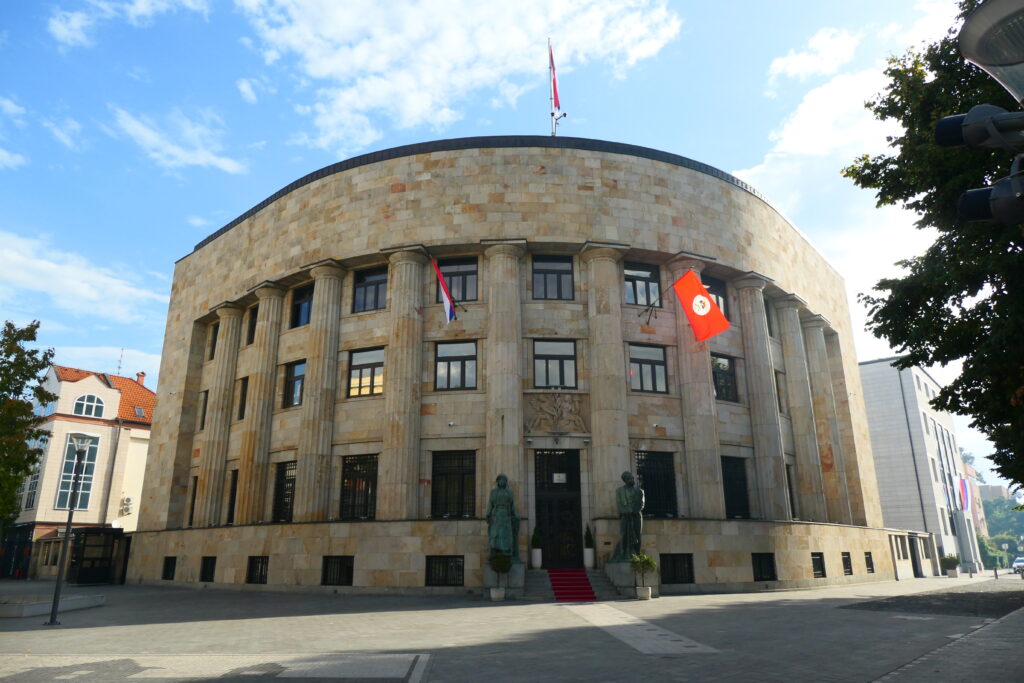

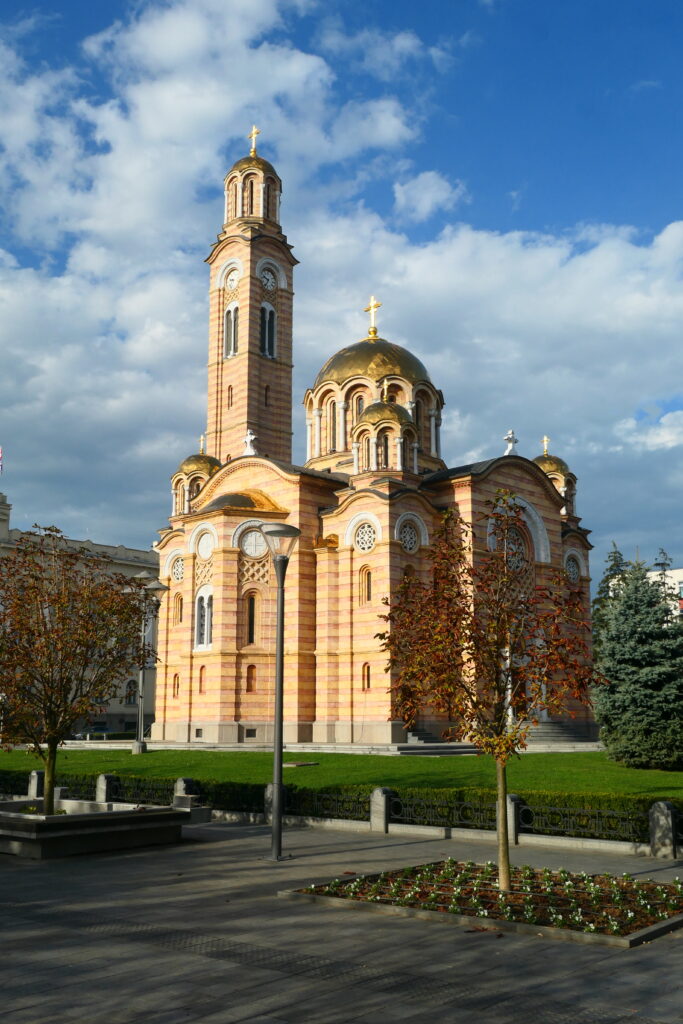

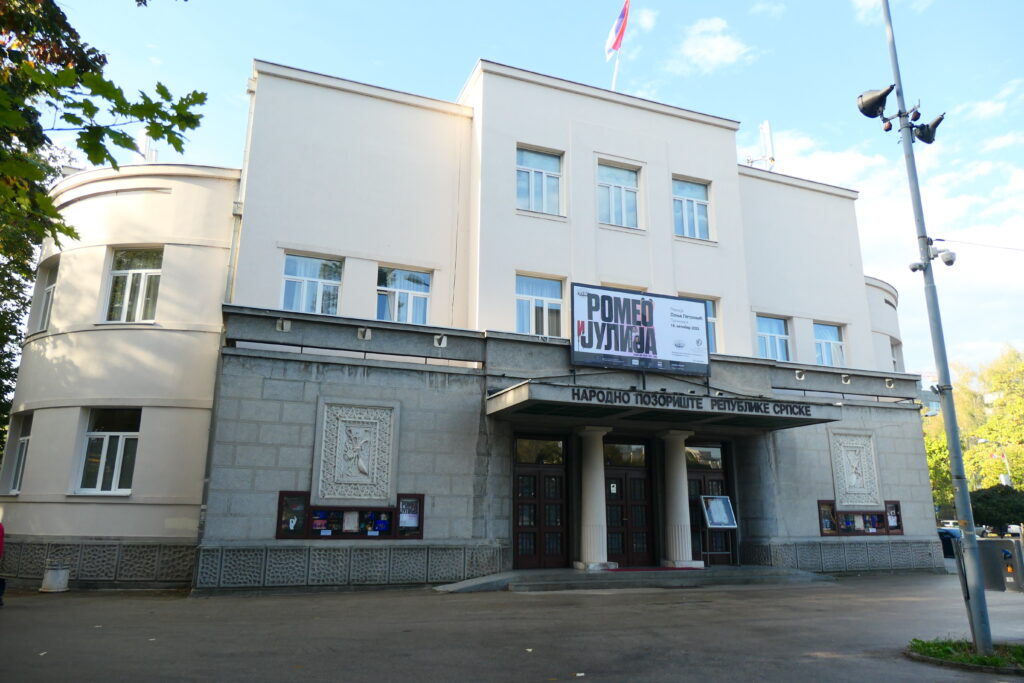
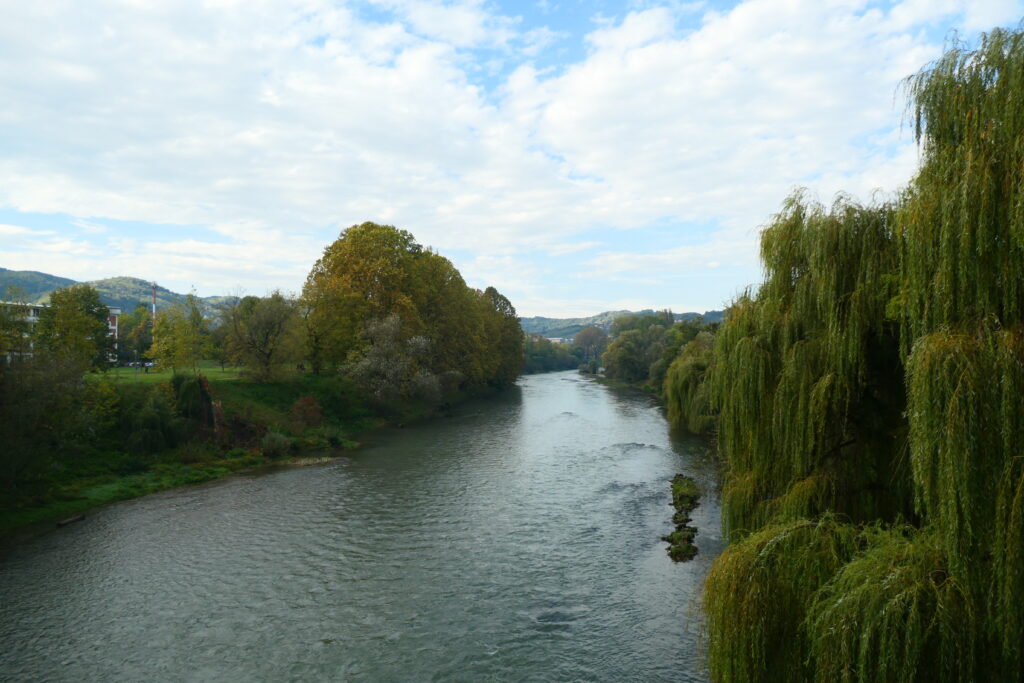
Blagaj
Blagaj Fort is 902 ft (275m) above sea level, and is a national monument of Bosnia and Herzegovina. The fort is located near the town of Blagaj in southern Bosnia and Herzegovina, overlooking the Buna River. Dating back to the 15th century, the fort was built by the Herzegovinian nobility to protect the area and control strategic routes.
The fortress offers stunning views of the surrounding landscape, including the source of the Buna River and the nearby Blagaj Tekke (a Sufi monastery). Though partially in ruins, Blagaj Fort remains an important cultural and historical site, attracting visitors with its medieval architecture, scenic views, and proximity to one of the most beautiful natural areas in the region.

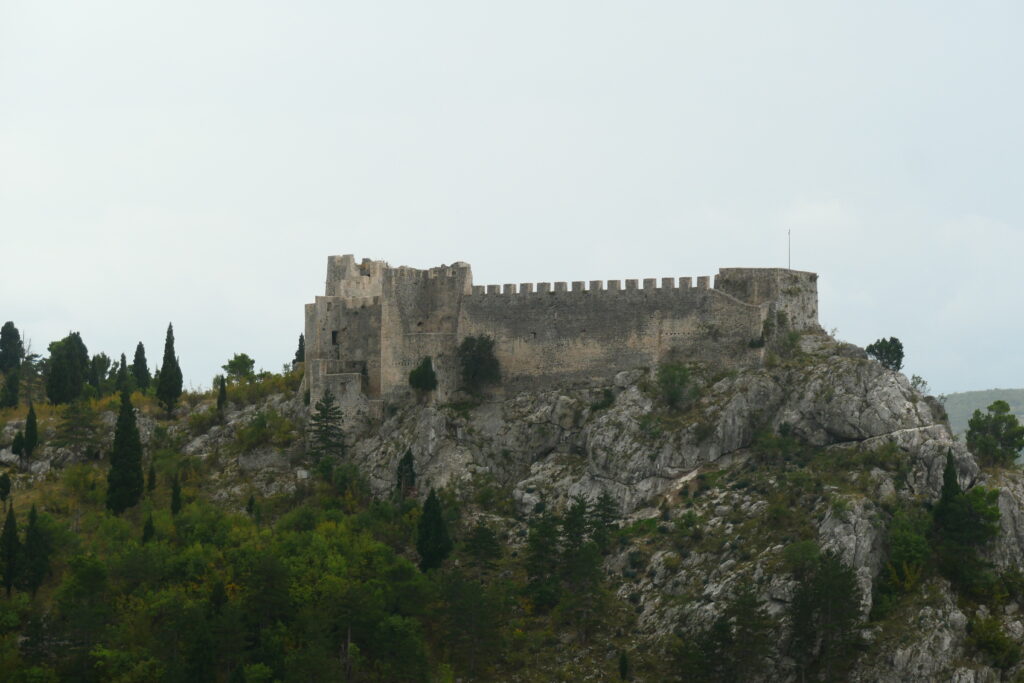
Blidinje national park
The Blidinje mountains form part of Blidinje national park and are situated at the heart of Dinaric Alps in the west of the country. The area was created by melting glaciers, creating a barren but spectacular look to the place. Lake Blidinje is an artificial alpine lake 3,888 ft (1,185m) above sea level. It’s 1.6 miles (2.5km) long and 1.3 miles (2.1 km) wide. However, the average depth is only about 3.3 ft (1m). There are numerous, stunningly beautiful valleys throughout the park as well as the amazing Dugo Polje plain. The whole area is a must see, no matter what the weather.


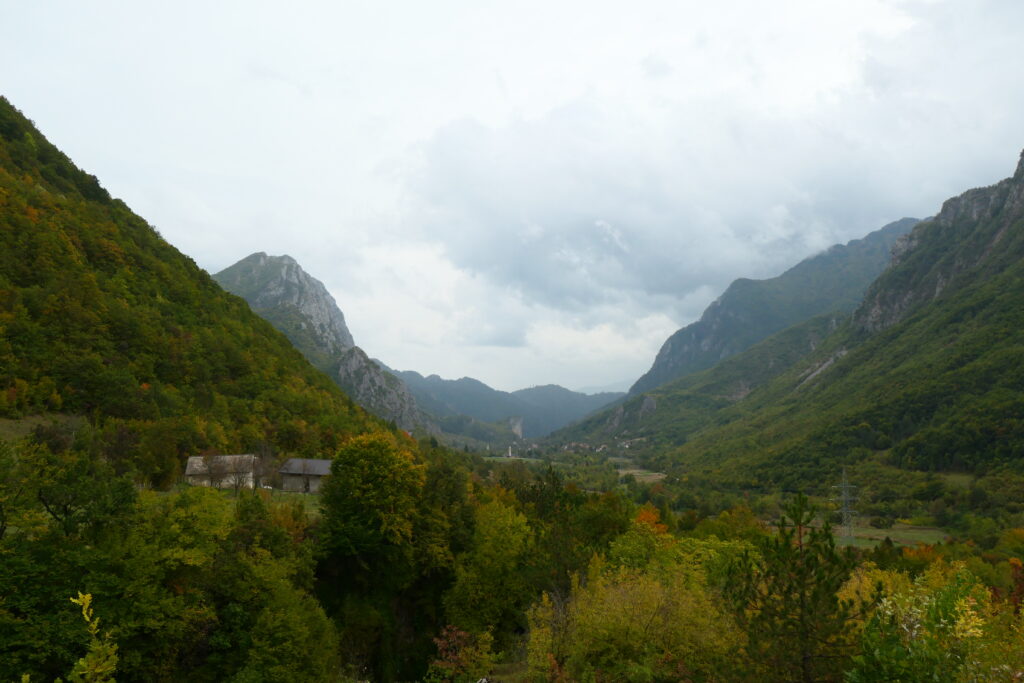




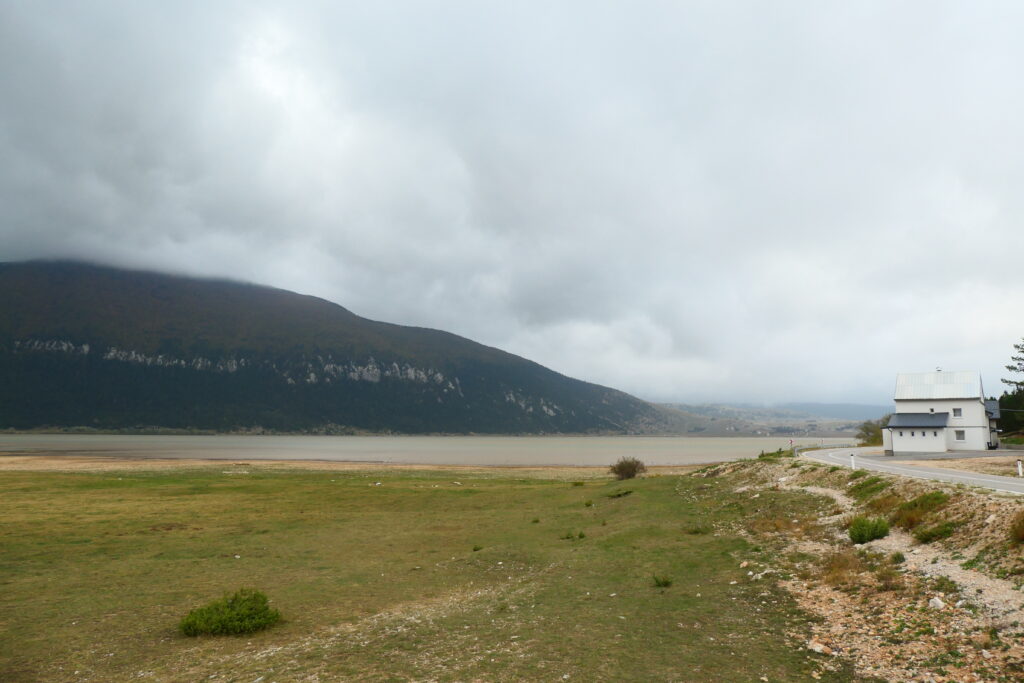
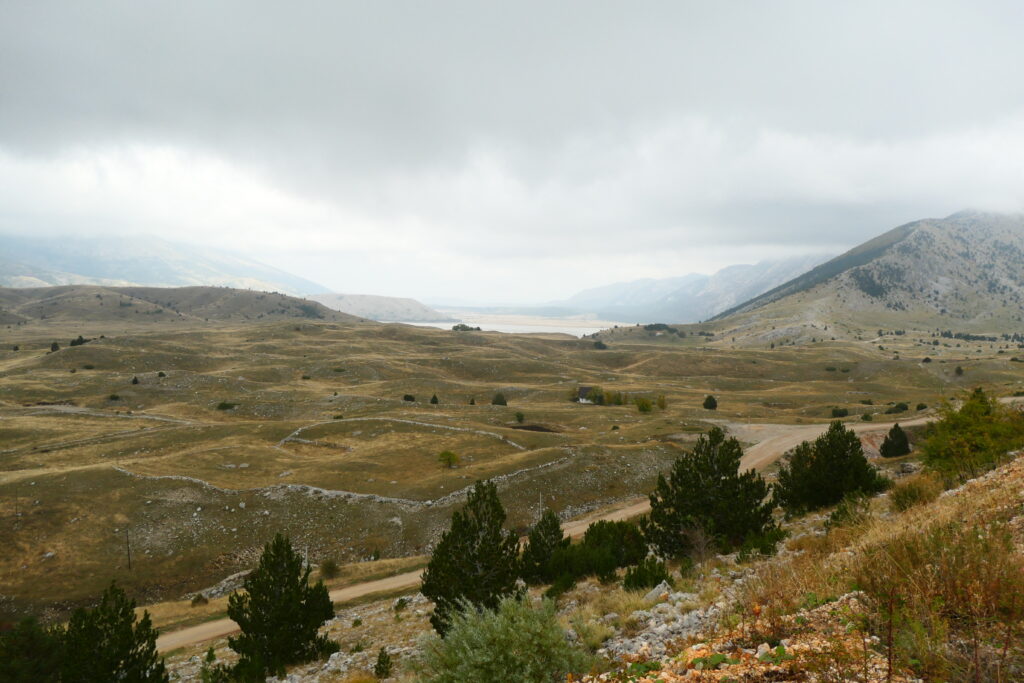
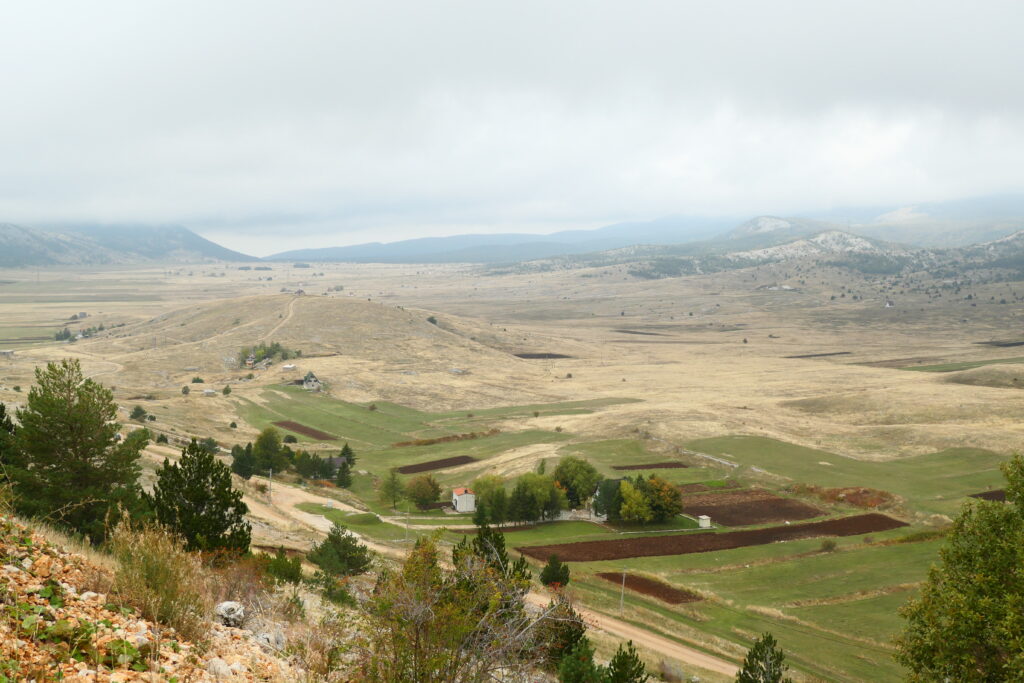
Foča
Foča is a small sleepy town that sits on the banks of the Drina River, in the Sutjeska National Park in the south east of Bosnia and Herzegovina, near the border with Montenegro. Known for its rich history and natural beauty, Foča has been a significant cultural and economic center in the region. The town is surrounded by stunning landscapes, including rugged mountains and lush forests, offering ample opportunities for outdoor activities like hiking, fishing, and rafting. Foča is also home to several historical landmarks, such as the Saray Mosque and the old town. Though affected by the Bosnian War, the town is slowly recovering and remains an important part of Bosnia’s heritage.


Jablaničko jezero
Jablaničko lake was created in 1953 after the construction of Jablanica Dam on the Neretva River. At 19 miles (30km) in length, it’s a large artificially formed lake situated on the river Neretva near Blidinje national park in the south of the country.
The lake is known for its stunning turquoise waters surrounded by mountainous landscapes, and is a popular destination for outdoor activities, including boating, fishing, and swimming, particularly during the summer months. There are loads of weekend cottages for hire along the shores of the lake.
The area also holds historical significance, as it was the site of the Battle of the Neretva during World War II. Jablaničko Lake offers a peaceful retreat and a scenic spot for nature lovers and history enthusiasts alike.
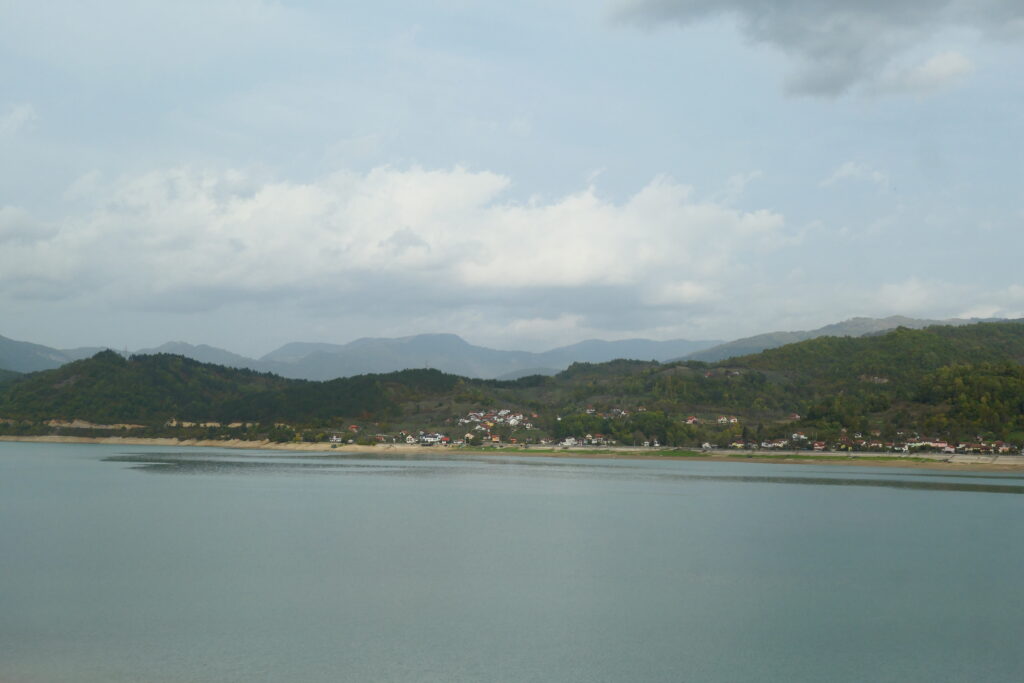

Jajce
Jajce is a historic town located in central Bosnia and Herzegovina, known for its picturesque scenery and rich cultural heritage. It’s been the home of medieval kings and Ottoman governors, and was once the capital of the medieval Bosnian Kingdom. The 14th century fortress is one of the best preserved fortified capitals of the Bosnian Kingdom, and the last stronghold before the kingdom dissolved under the pressure of the Ottoman Empire.
The beautiful Pliva Waterfall is located on the edge of Jajce, where the Pliva River flows into the Vrbas River, with its 22 meters cascade on the Pliva river.
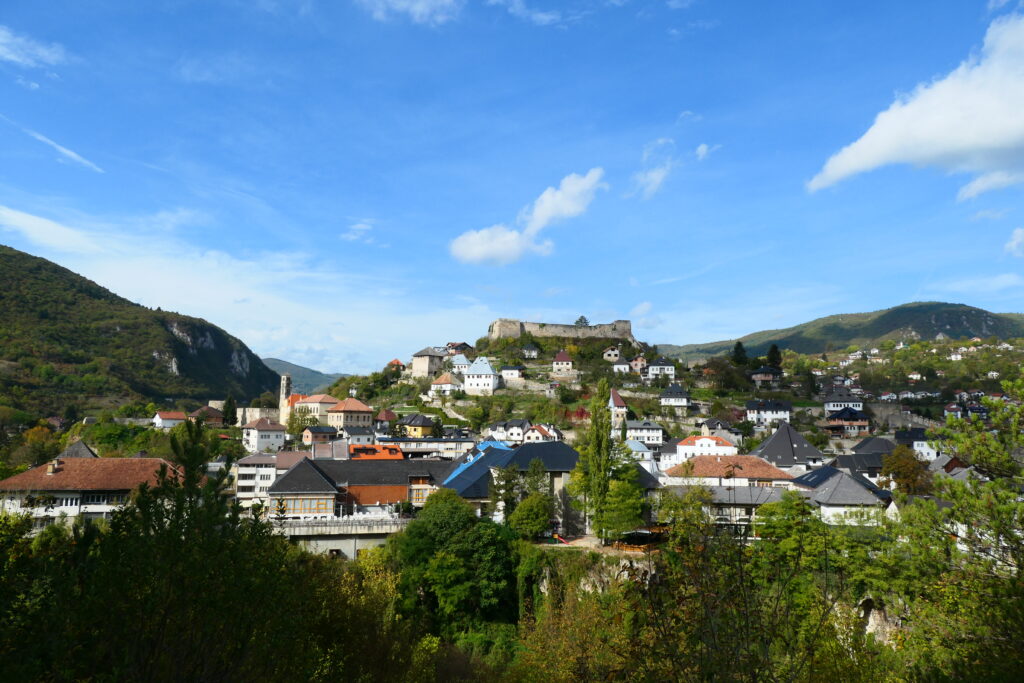
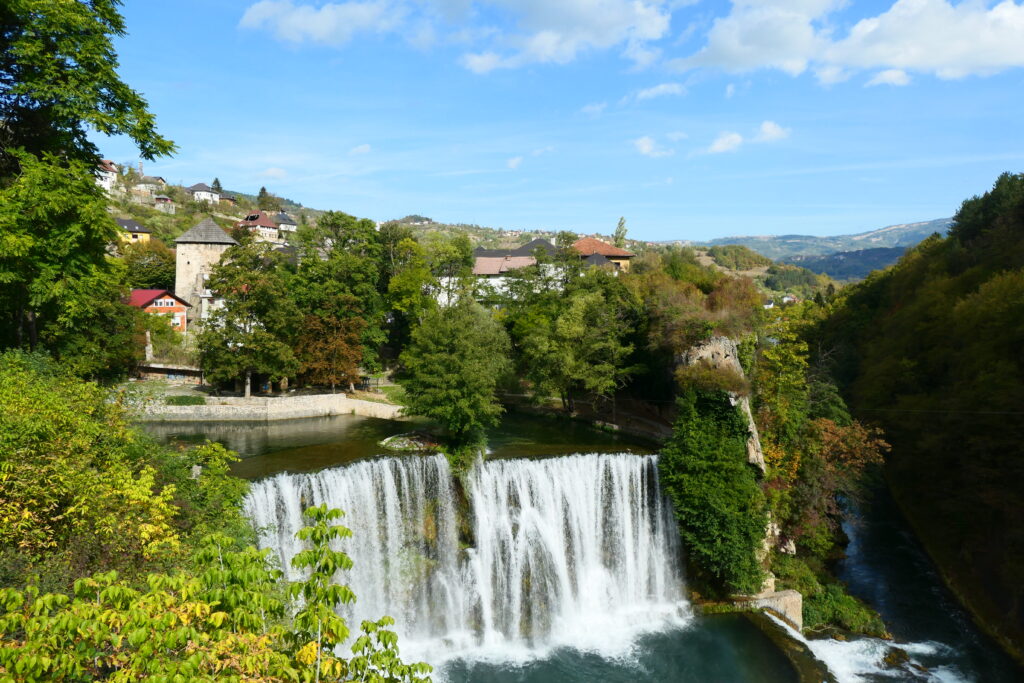

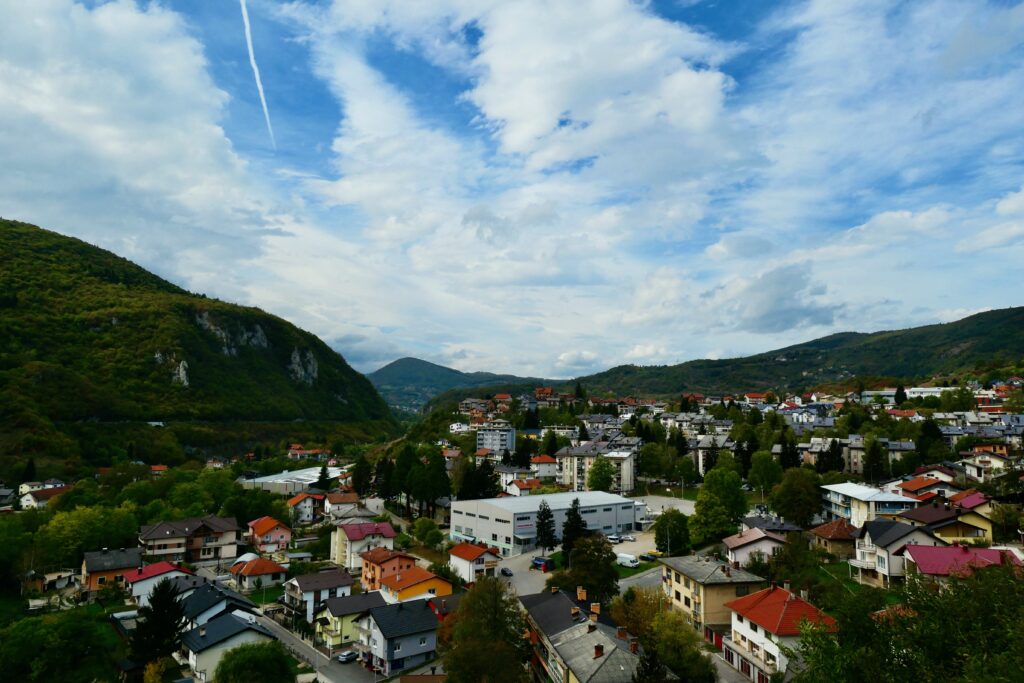
Klinje Jezero
Lake Klinje is a beautiful, serene lake located in the south of Bosnia and Herzegovina, near the town of Klinje, in Republika Srpska. Not far from the border with Montenegro, the lake is surrounded by lush greenery and offers a very relaxing place to stop for a break.
Known for its clear waters, it provides opportunities for fishing, swimming, and kayaking. The surrounding area is ideal for hiking and enjoying the natural beauty of the Bosnian countryside. Lake Klinje is a less-known gem, offering a tranquil environment away from the more crowded tourist destinations, making it perfect for relaxation and outdoor activities.

Kravice
The Kravice waterfalls are a lovely natural attraction located near the town of Čapljina in southern Bosnia and Herzegovina, close to Mostar. The waterfalls are formed by the Trebižat River, cascading over a series of limestone cliffs into a large, crystal-clear pool below. The falls are surrounded by lush greenery, creating a serene and picturesque environment.
The waterfalls are about 80 ft (25 m) in width, and can get super busy during the summer holidays, so plan ahead. The cost to park our VW Golf and visit the falls was KM20 (£9).
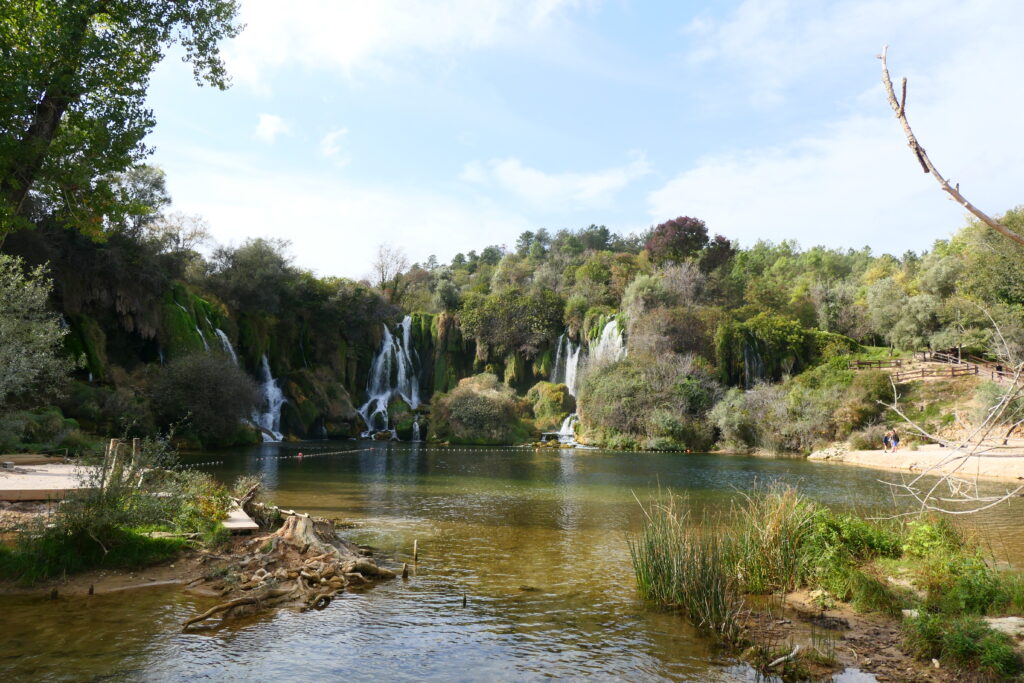

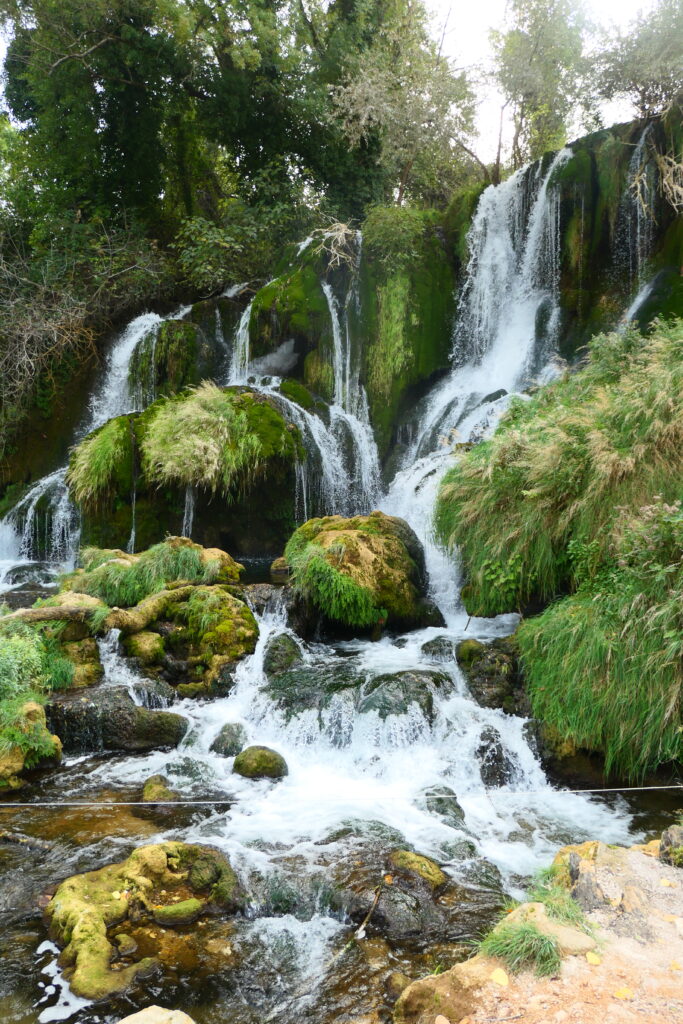
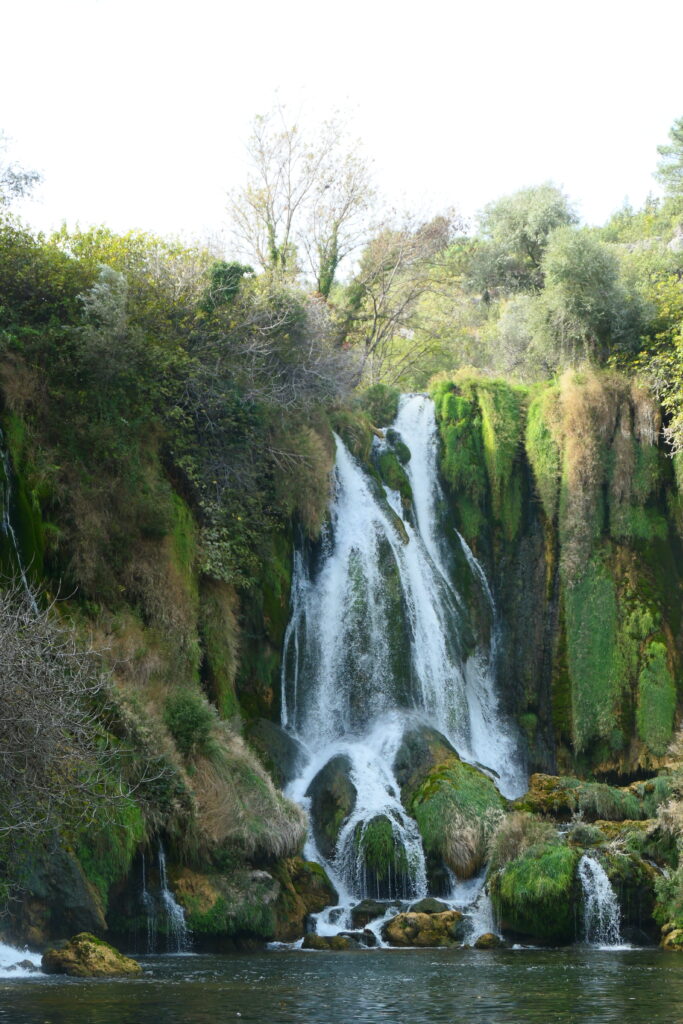
Mount Maglić
Mount Maglić is located in the Sutjeska national park and is one of the most visited attractions in in Bosnia and Herzegovina. It is the highest peak in the country, at 7,828 ft (2,386 m) above sea level, and sits in the Dinaric Alps on the border with Montenegro. The mountain offers stunning views of the surrounding landscapes, including deep valleys, pristine rivers, and lush forests. Hiking to the summit is challenging yet rewarding, with trails passing through diverse terrain.

Mostar
Mostar is a historic city located in southern Bosnia and Herzegovina, and is the capital of Herzegovina. It was named after the bridge keepers (mostari) who guarded the Old Bridge during the Ottoman era. Stari Most (the old bridge), a 16th-century structure that spans the Neretva River, was destroyed during the Bosnian war and was subsequently rebuilt, reopening in 2004. The old bridge is now a UNESCO World Heritage Site and is one of Bosnia and Herzegovina’s most visited landmarks.
The whole city is renowned for its stunning Ottoman-era architecture and cultural significance. The Old Bazaar is filled with narrow streets, traditional shops and cafés, giving visitors a glimpse into the city’s rich history. The city has a diverse cultural heritage, influenced by its Ottoman, Mediterranean, and Slavic roots.

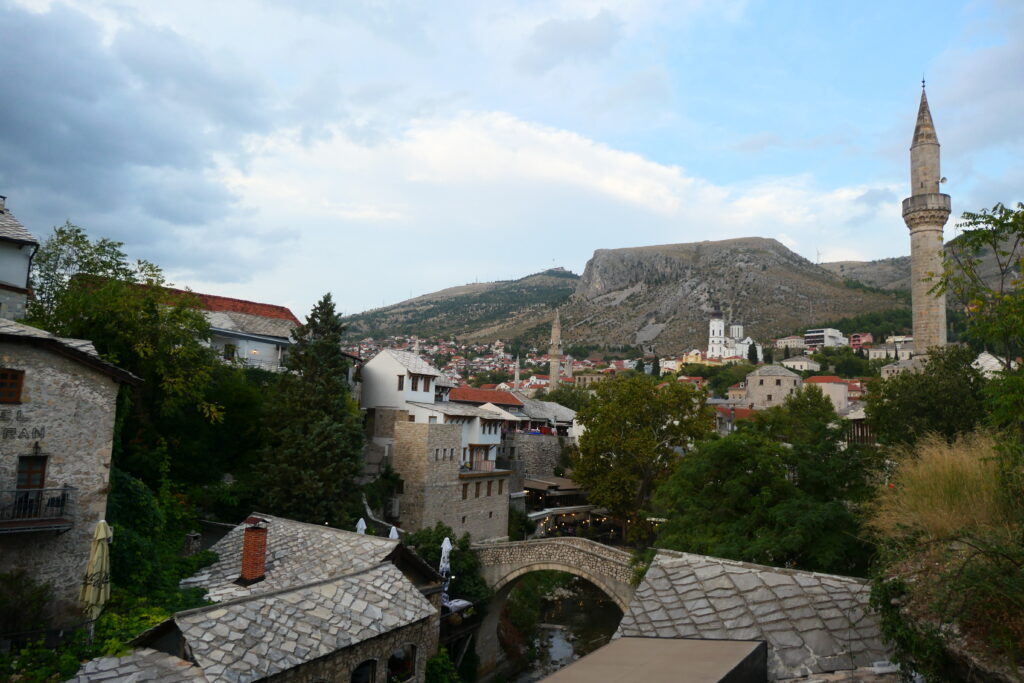
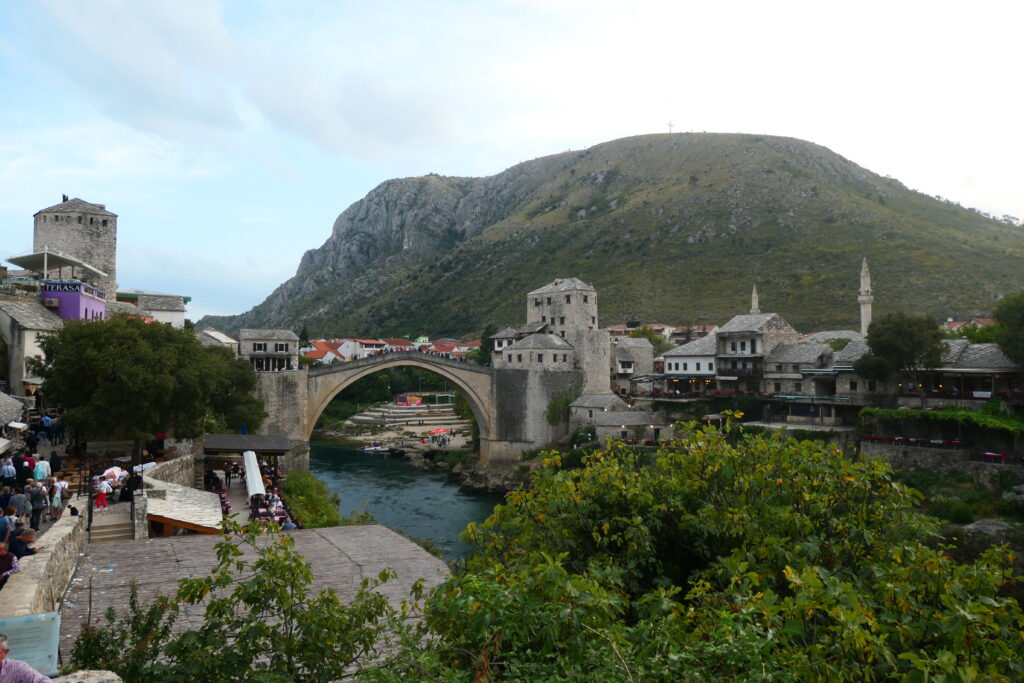


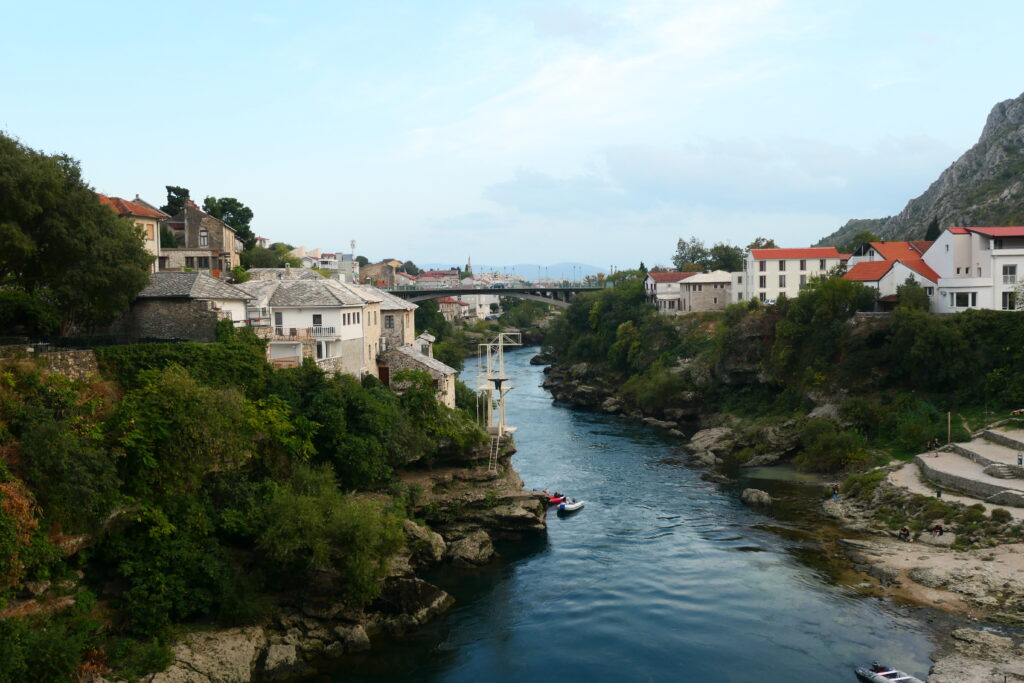
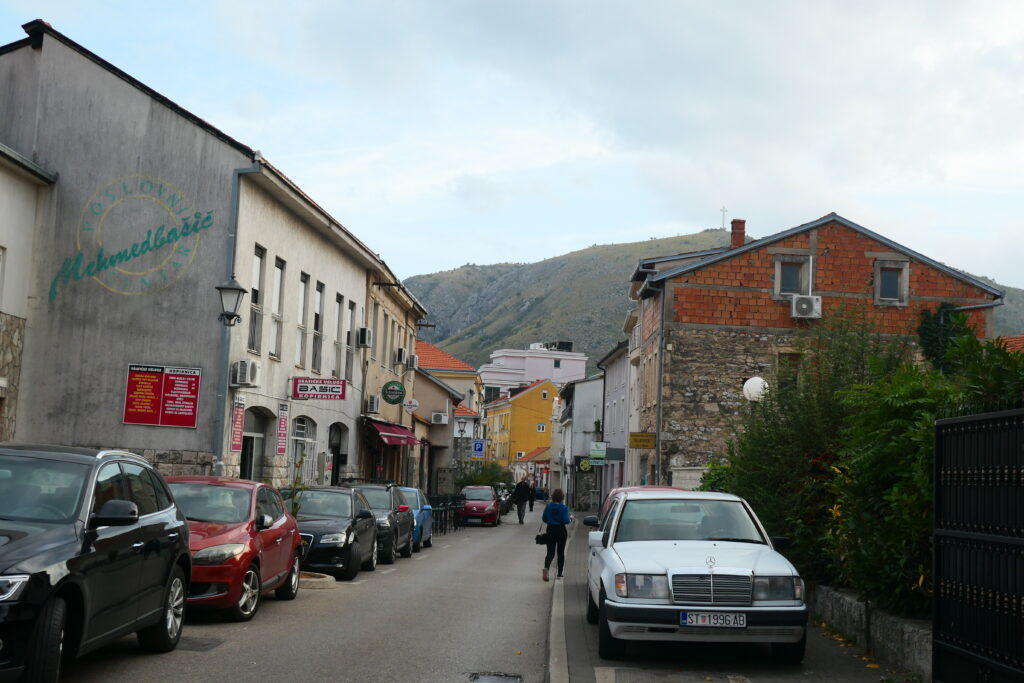

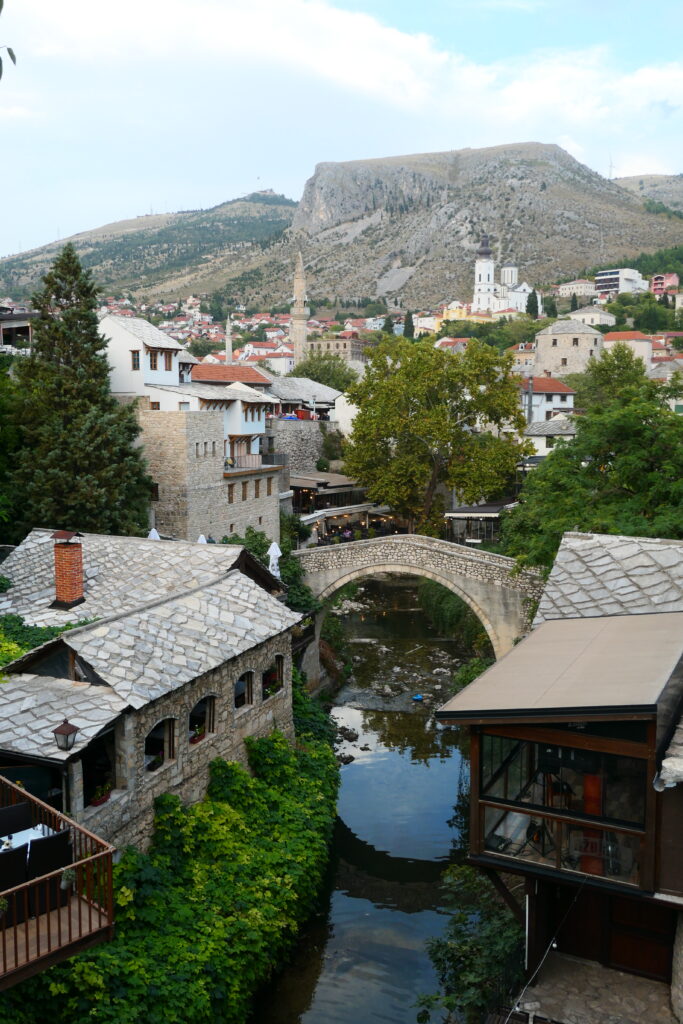
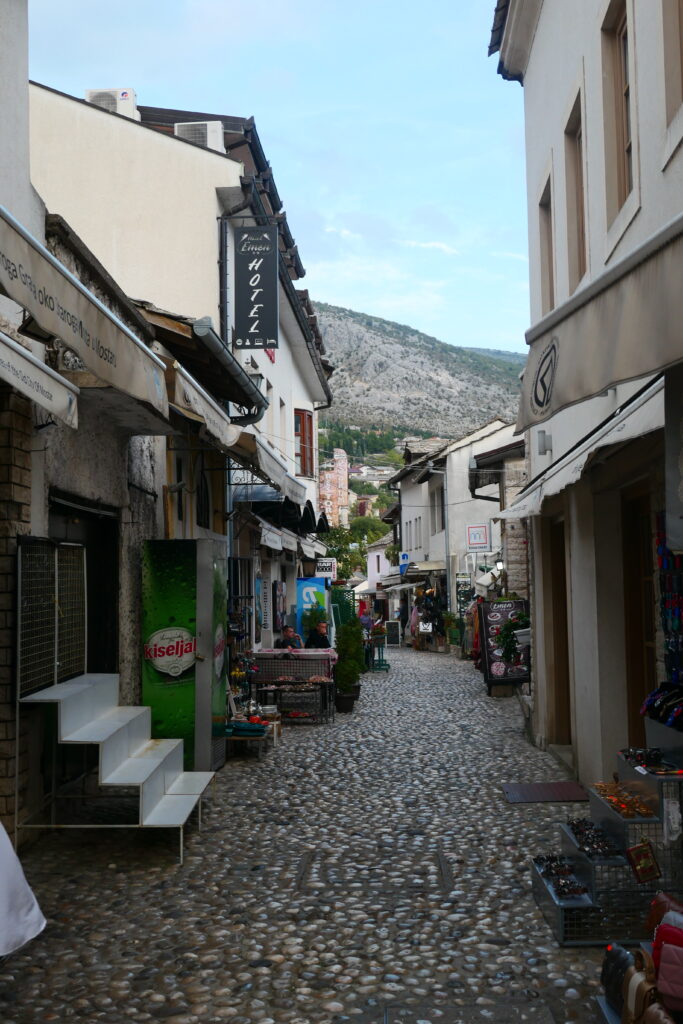


Neum
Neum is the only BIH town that sits on the country’s short coastline. It’s located in the hills on a winding road, and is quite different in look from those towns further along the coast in Croatia. The limited coastline makes Neum a unique and somewhat isolated coastal destination, offering a peaceful retreat amid the more developed tourist areas of Croatia. Costs are substantially lower than in Croatia which you may wish to take advantage of.

Sarajevo
Sarajevo is the capital of Bosnia and Herzegovina. It’s a relatively small capital city with a population fewer than a third of a million people. It was in Sarajevo that the assassination of Archduke Franz Ferdinand took place, a murder that sparked the First World War.
A multicultural city, it is one of only a few major European cities to have a catholic church, eastern orthodox church, a mosque and a synagogue within the same neighbourhood. The neo-gothic 19th century Sacred Heart Cathedral in Sarajevo is the largest catholic church in the country. Not far away is the Gazi Hursev-Beg Mosque, which was built in the 16th century, and is the largest mosque in BIH.
As a capital city, there are many restaurants and cafe’s in Sarajevo, in particular in the old town. The myriad alleyways in the Baščaršija (the old town’s 15th century market) contain hidden gems aplenty with many bargains to be had.
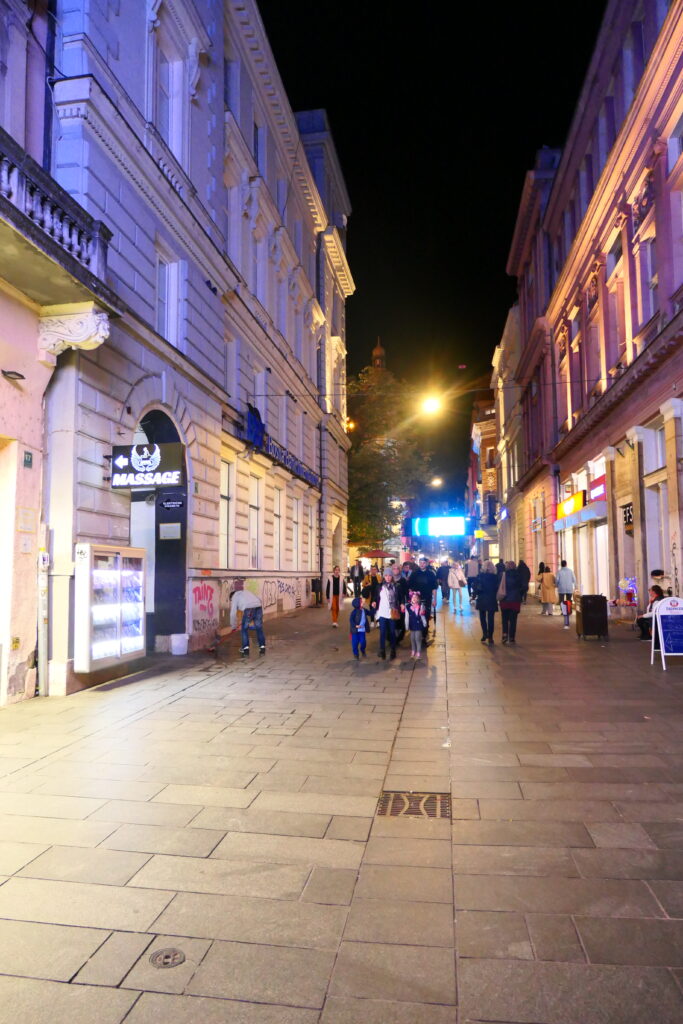
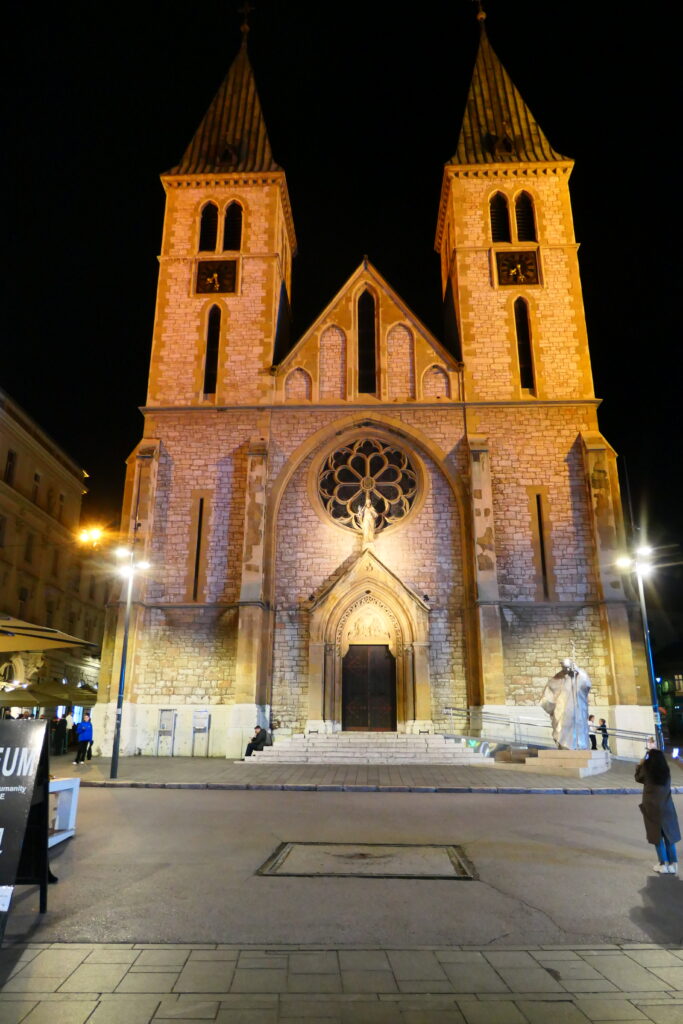

Vrbas Canyon
The stunning Vrbas Canyon, located near Dabrac, is a stunning natural landmark, carved by the Vrbas River as it flows through the Dinaric Alps. The canyon stretches for about 16 miles (25 km), offering dramatic cliffs, lush greenery, and crystal-clear waters. The surrounding landscape is rich in biodiversity, making it a haven for nature lovers.
We came across is completely by chance as we were driving from Banja Luka to Jajce, and stoped for a break. There was no signage for it!?

What’s it like to drive in Bosnia and Herzegovina?
They drive on the right hand side of the road in Bosnia and Herzegovina. Driving in BIH appears to be quite laid back in the main, with very few people driving ‘on your tail’, we found. If they do want to get past, they will, regardless of whether it’s dangerous or not!
In the main, driving standards in BIH are quite poor, and roads are also quite poor, leading to some minor mishaps. Although we did not see any large crashes unlike many other countries we’ve travelled through. Some roads in Bosnia are very poor and unpaved, especially in mountainous areas.
What are the road conditions like in Bosnia and Herzegovina?
In the main, the roads in BIH are quite good, although there are many roads that are unsurfaced gravel tracks, or mud roads.
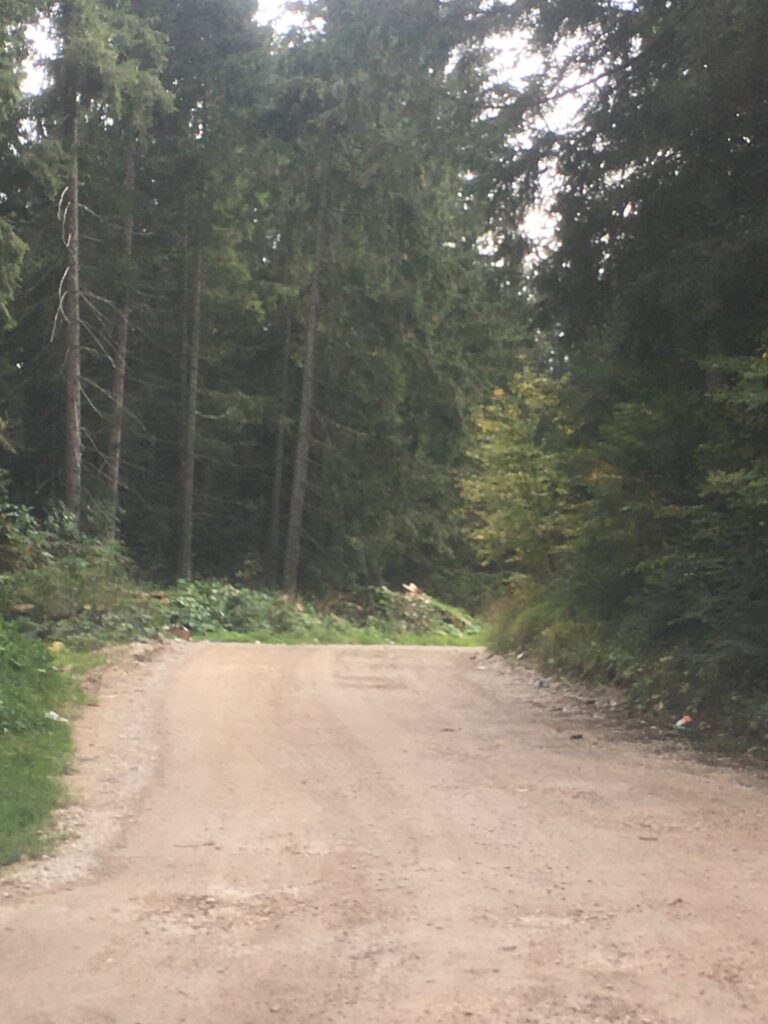

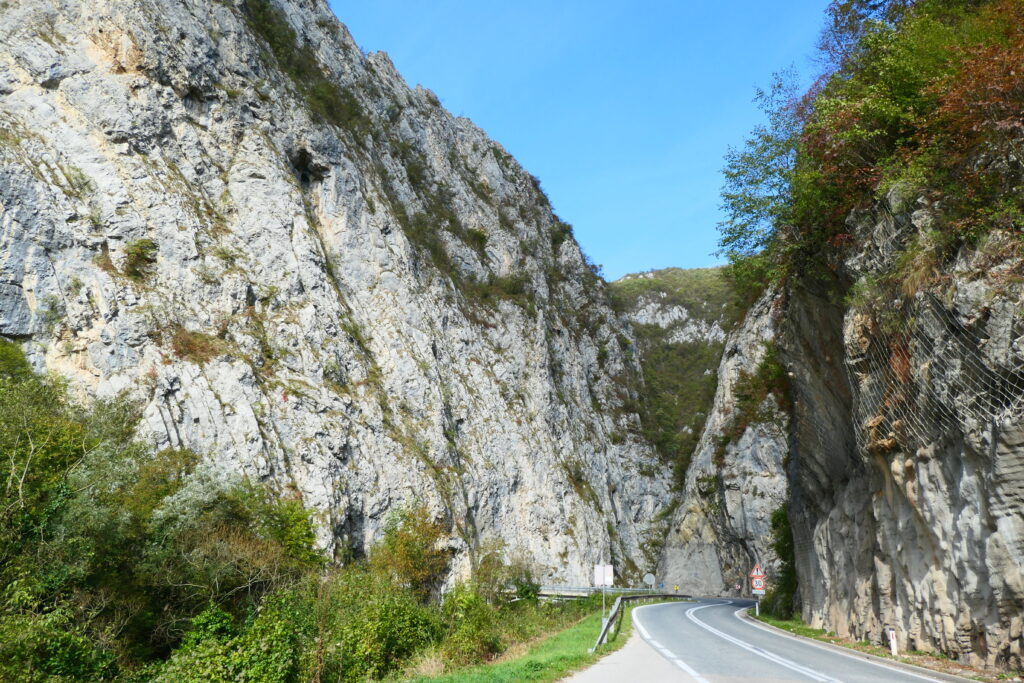

Car breakers
There are an incredible amount of car breaker yards in BIH – several per town and even several per village in some areas. Many of the cars in the yards have had their front bumpers removed – presumably due to all of the small accidents that occur?!
Do you require an international driving permit in Bosnia and Herzegovina?
We’ve created a dedicated page to driving abroad, which answers this question, and more, which you might find helpful.
Can you use your UK driving license when driving through Bosnia and Herzegovina?
We’ve created a dedicated page to driving abroad, which answers this question, and more, which you might find helpful.
Do I need a carnet de passages to drive in Bosnia and Herzegovina?
We’ve created a dedicated page to driving abroad, which answers this question, and more, which you might find helpful.
What are the speed limits in Bosnia and Herzegovina?

The speed limits for cars in Bosnia and Herzegovina are:
- 30 mph (50 km/h) for urban driving
- 50 mph (80 km/h) outside of built up areas
- 60 mph (100 km/h) on dual carriageways
- 80 mph (130 km/h) on motorways
What currency do they use in Bosnia and Herzegovina?
In Bosnia and Herzegovina they use the Bosnian Mark. Most transactions are in cash. Although the Euro can be accepted for larger transactions, it’s not guaranteed. The Euro is not generally accepted in supermarkets, petrol stations etc. Travellers cheques are also not widely accepted. There are lots of ATMs in city centres, although not elsewhere.
What language do they speak in Bosnia and Herzegovina?
They speak Bosnian, Serbian and Croatian in Bosnia and Herzegovina.
What time zone is Bosnia in?
Remember, when you’re planning your next trip to take a look at what time zone it’s in.
Do I need a visa to visit Bosnia and Herzegovina?
We’ve created a dedicated, more comprehensive page on visas, which you should find helpful. Check it out!
Is wild camping legal in Bosnia?
Yes, wild camping is fine in Bosnia, although you should avoid national parks and natural reserves, and be mindful of mines – look out for signs!
What plug / socket type do they use in Bosnia and Herzegovina?

In Bosnia and Herzegovina they use plug / socket type F.
Health issues in Bosnia and Herzegovina
Is it safe to drink water in Bosnia and Herzegovina?
No, it is not safe to drink tap water in Bosnia and Herzegovina. Bottled water is readily available across the country.
What vaccinations are required for Bosnia and Herzegovina?
This NHS website is kept up to date with all relevant information on vaccinations in Bosnia and Herzegovina.
Phones in BIH
What is the country calling code for Bosnia & Herzegovina?
The country calling code for Bosnia & Herzegovina is +387
What are the emergency phone numbers in Bosnia & Herzegovina?
- The emergency number for police in BIH is: 122
- In BIH, the emergency number for ambulance is: 124
- The emergency number for fire in BIH is: 123
Bosnia & Herzegovina SIM card
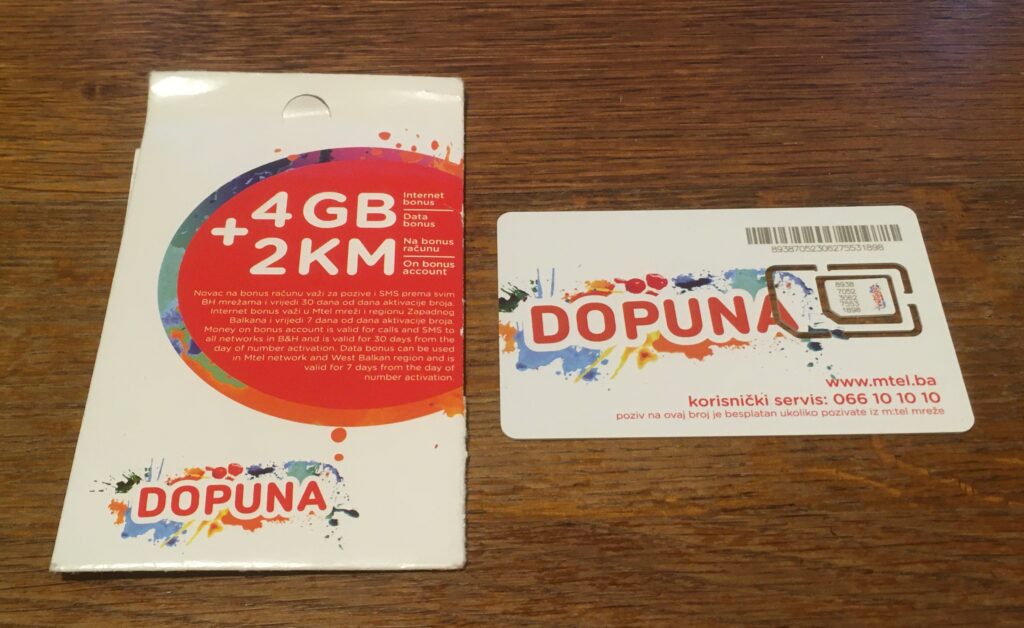
We bought a m:tel Sim card at the first petrol station we came to in Banja Luka. The woman in the fuel station was super helpful 🙂
We paid €5 (£4.25) for a 30 day pre-paid card [4GB]. The Sim card only worked in Bosnia & Herzegovina.
If you’ve got some useful info that you’d like to share, let us know!
Don’t forget to check out all the other pictures!
